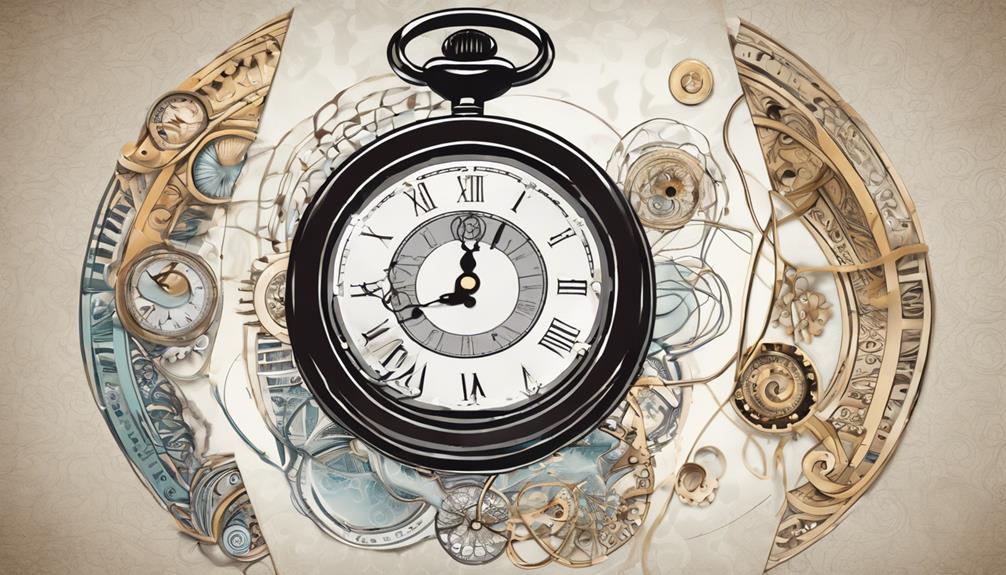Discover how visualization has revolutionized hypnosis techniques, enhancing suggestion power and establishing profound subconscious connections. Techniques now involve using metaphorical language, anchoring visual cues, and harnessing symbolic imagery to influence thoughts and behaviors deeply. By incorporating vivid mental imagery, clients can deepen relaxation, engage the subconscious mind directly, and create a powerful environment for positive change. Repetition in hypnosis deepens trance states, reinforces suggestions, and amplifies the effectiveness of the process. Explore the evolution of visualization techniques in hypnosis to unlock the transformative power of the subconscious mind.
Importance of Visualization in Hypnosis
Visualization plays a crucial role in hypnosis techniques by enhancing the power of suggestion and facilitating deep relaxation. Through the use of visual imagery, individuals can establish a profound subconscious connection that's essential for successful hypnosis sessions.
Mental imagery, combined with hypnotic suggestion, allows the hypnotist to guide you into a state of heightened receptivity, where your mind becomes more open to positive affirmations and behavioral changes.
When you engage in visualizing scenarios or experiences as directed during hypnosis, you're essentially creating a direct pathway to your subconscious mind. This direct line of communication between your conscious and subconscious selves enables the hypnotist to embed suggestions more effectively, influencing your thoughts, feelings, and behaviors at a profound level.
Techniques for Embedding Messages
To effectively embed messages during hypnosis, practitioners often utilize strategic language patterns and sensory cues. Creative imagery and visual association play crucial roles in this process, enhancing the effectiveness of the messages conveyed.
Here are three key techniques for embedding messages in hypnosis:
- Metaphorical Language: By using metaphors and storytelling, you can engage the client's imagination and bypass their conscious resistance. For instance, comparing a challenging situation to climbing a mountain can help embed messages of perseverance and strength.
- Anchoring Visual Cues: Associating specific visual cues with desired behaviors or thoughts can create powerful triggers during hypnosis sessions. For example, linking the color blue to feelings of calmness and relaxation can be a subtle yet effective way to embed messages related to stress management.
- Symbolic Imagery: Introducing symbolic imagery that resonates with the client's subconscious can deepen the impact of embedded messages. For instance, using a blooming flower to represent personal growth and transformation can help reinforce positive suggestions during hypnosis sessions.
Enhancing Hypnosis With Visualization
Enhance your hypnosis sessions by incorporating vivid mental imagery to deepen the client's state of relaxation and receptivity. Visual imagery can lead to profound results by engaging the client's subconscious mind in a more direct and impactful way.
When you guide your client through scenes filled with rich details and sensory experiences, you create a powerful environment for change to occur.
Creative visualization is a technique that can have transformative effects on the individual's mindset and behavior. By encouraging your client to imagine themselves achieving their goals or overcoming challenges, you're planting seeds of positive change within their subconscious.
This process can help them build confidence, motivation, and resilience to tackle obstacles in their daily life.
The Power of Repetition in Hypnosis
Repetition plays a crucial role in deepening the hypnotic experience and reinforcing desired suggestions within your subconscious mind. Through repetitive affirmations and subliminal cues, your mind becomes more receptive and open to the hypnotic process.
Here is why repetition is so powerful in hypnosis:
- Deepening Trance State: Repetition of specific phrases or suggestions can guide you into a deeper state of trance, allowing the hypnotist to access your subconscious more effectively.
- Enhanced Focus: By hearing repetitive affirmations, your mind focuses on those suggestions, making it easier for the hypnotist to instill positive changes or new behaviors.
- Subconscious Reinforcement: Subliminal cues, combined with repetitive affirmations, create a strong imprint in your subconscious, increasing the likelihood of the desired outcomes manifesting in your thoughts and actions.
Incorporating repetition in hypnosis sessions can amplify the effectiveness of the process, leading to profound changes in your mindset and behavior.
Leveraging Visualization for Subliminal Messages
Utilize the power of visualization techniques to embed subliminal messages deeply within your subconscious mind.
Subliminal messaging involves subtle cues that bypass your conscious awareness but can still influence your behavior. By incorporating visual stimuli and hypnotic suggestions into your visualization practice, you can enhance the effectiveness of these subliminal messages.
Visual stimuli play a crucial role in subliminal messaging as they can evoke powerful emotional responses and associations. When combined with hypnotic suggestions, these visual cues can be integrated seamlessly into your subconscious, shaping your thoughts and beliefs without your active participation.
This subconscious influence can lead to positive changes in your attitudes, habits, and perceptions over time.
Through the strategic use of visualization techniques, you can harness the power of subliminal messaging to reprogram your subconscious mind for success and personal growth. By immersing yourself in these visualizations regularly, you pave the way for profound transformations in your mindset and behavior.
Can Visualization Techniques in Hypnosis Evolve Over Time?
Yes, visualization techniques for success can evolve over time within hypnosis. As the individual’s mindset and goals change, so too can the visualization methods used during hypnosis sessions. Adapting these techniques to align with current objectives can enhance their effectiveness and impact.
Evolution of Visualization Techniques
Now, let's explore how visualization techniques have evolved over time to enhance their effectiveness in hypnotic practices.
- Historical Origins:
Visualization has its roots in ancient civilizations where shamans and healers used imagery to induce trance-like states for healing. These early practices laid the foundation for the integration of visualization in modern hypnotic techniques.
- Traditional Methods:
Traditional visualization techniques often involved guiding the subject to imagine peaceful scenes or positive outcomes. While still effective, these methods have evolved to incorporate more personalized and interactive visualizations tailored to individual preferences.
- Innovative Approaches:
With advancements in technology, hypnotherapists now leverage virtual reality and augmented reality to create immersive visualizations. These innovative approaches enable individuals to experience scenarios in a more vivid and engaging manner, enhancing the therapeutic effects of visualization in hypnosis.
Conclusion
You've come a long way in understanding the power of visualization in hypnosis techniques.
It's ironic, isn't it? The more you see, the less you believe. But in this case, the more you visualize, the more you achieve.
Keep exploring the evolution of visualization techniques and unlock the limitless potential of the mind.
Who knows what hidden truths you may uncover when you close your eyes and let your imagination run wild.
Dr. John Renoldson is a distinguished professor of Clinical Research Hypnotherapy He holds a PhD in Clinical Psychology and specializes in hypnotherapy and scientific research to enhance therapeutic outcomes. Dr. Renoldson has authored numerous peer-reviewed articles on the efficacy of hypnosis in treating conditions.




